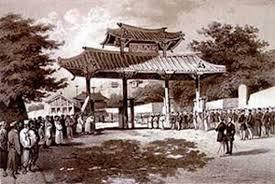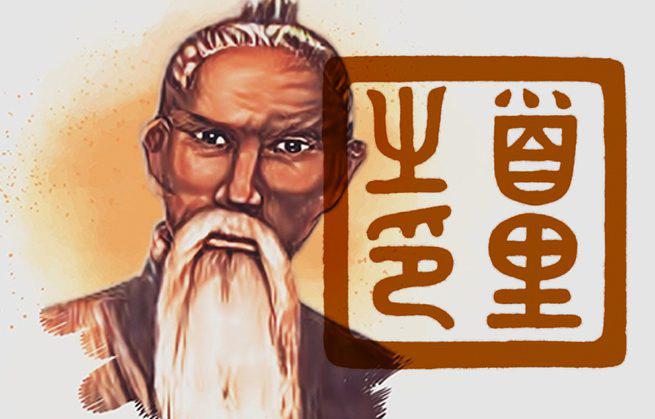
5 minute read
DOJO STORIES SENSEI Gerardo Balves
FOR HISTORY LOVERS, GETTING CLOSER TO THE TRUTH SHOULD NEVER BE A DISAPPOINTMENT, BUT THE BEST WAY TO ASSEMBLE A COMPLICATED PUZZLE WHERE THE DOUBTS ARE MUCH MORE THAN THE CERTAINTIES. THE FOLLOWING ARTICLE ONLY PLACES IN DOUBT THE STAY OF A TEACHER IN CHINA AND NOT HIS ENTIRE HISTORY, SINCE HIS LEGACY HAS REACHED UP TO OUR TIME.
Gerardo Balves Tode Sakugawa by Andreas Quast
Advertisement
Recently, together with other karate practitioners from abroad, we discussed the personal story of one of the most prominent martial artists from Okinawa and hailing from the Ryūkyū Shizoku class. That person in question is Sakugawa Kanga, it is said that he went to China (during the Qing dynasty) very young to study Chinese martial arts with a famous master for several years. He even learned several kata (tàolù) that he later taught upon his return to the Ryūkyū. Since I have some knowledge of Ryūkyūan history, when I read this person's personal history I thought that there were many things that were not entirely credible. The article by Sakugawa Kanga (Tōdī or Tode Sakugawa) was published in the document “Okinawan Times”. I would like to start developing it in this first installment. In this article Mr. Dana Masayuki, an expert in Okinawan studies, analyzed the history of Sakugawa Kanga from various angles. But what interested me the most was the part in which mention is made of the study carried out by Sakugawa in China. It is quoted below: “As to the point in question, it is not entirely correct to say that Sakugawa traveled expressly to study martial arts in China. It is clearly known which Kanshō (governmentsponsored foreign students) were sent to China and in what year, and Kanga is not referenced in any document. Since the Shinkōsen (Ryukyuan tribute and trade ships with China) carried high officials, it is known that the chief envoy was authorized to be accompanied by up to twelve attendants. While the mid-level officials and the Saifu could only carry a maximum of four. There were many cases of people who traveled as assistants and then did academic studies, etc. Based on the quote above, we see that the name of Sakugawa Kanga is not found in the Kanshō list. Therefore, it is impossible for him to study abroad in this condition. However, it is also said that there is a possibility that he served as an assistant in some tribute mission to China's Qing Dynasty. The following was written about the attendees: “Although the attendees were members of the tribute mission, their particular activities were naturally restricted. If it was a short stay, it was fixed at approximately half a year. And the most you could get to extend your stay was
DOJO STORIES Sensei
Gerardo Balves

a year and a half as the time limit.” "Therefore, it would seem impossible that some of these assistants would have stayed in Fuzhou for many years to train Karate." (Same source as before) In short, if Sakugawa Kanga went to China as an attendant on a tribute ship, he might not have practiced Chinese martial arts for several years, but it might have been half to one and a half years at most. Let's see what all the personal stories written about Sakugawa Kanga in various karate books so far tell us. He “he studied in Beijing and also at the Guozijian (National Academy of China). It is said that he was the first Ryūkyūan person allowed to enter the Shanpuying (martial arts training center) inside the Peking castle, and that he learned Northern School Kenpō there. And that after returning home, he became a teacher of the National Academy (Kokugaku) of the Ryūkyū royal government." By the way, in the article quoted above it was also written that the teachers of the National Academy (Kokugaku) were only the Shizoku of Kumemura, and that the Shizoku of Shuri (Sakugawa was born in Shuri) could not be teachers there. Looking at it like this, from the perspective of Okinawan academic studies, we can see that most of Sakugawa Kanga's personal history that has been told so far was fiction. The aforementioned reasons also apply to the other karate masters who are said to have practiced martial arts in China during the Ryūkyū kingdom. According to oral folklore, it is said that these masters have not only trained martial arts in China for several years - sometimes for decades - but some of them have even obtained the license of "complete mastery in the art". (menkyo kaiden) and even having mastered the "secret techniques". But taking into account the above, all these anecdotes become exaggerations or misinterpretations of the facts. And so I ask myself the following, first of all: Would it be possible to achieve "full mastery of the art" or master the "secret techniques" of an art by staying for a year and a half? I guess in that time period it would only have been possible to learn the basic training methods, and even if one was able to learn Kata, it would have been a Kata at best, like Sanchin for example. That's why I thought that the credentials of a certain Ryūkyū Shizoku presented at the beginning of this article have very poor credibility as well. Of course it is possible that the story was exaggerated and that oral folklore was passing down the story based on those same generations. Therefore, even if the story of a karate school was not entirely true, it was not necessarily created in bad faith, but could have been naturally changed by oral folklore and told as if in whispers. It is necessary to consider oral folklore for what it is, when there is no compelling evidence to contrast it. And I think a similar attitude to the one described above is necessary when studying the history of Karate from now on. Thus the researchers of the history of karate, to some extent, will also gain knowledge about the history of Ryūkyūan. Translated into Spanish with the permission of Andreas Quast sensei by Gerardo Balves
Gerardo Balves 7th Dan Kobayashi-ryu Kyudokan Coordinator of the International Group of Dojos Kyudo Mugen Kyudokan https://www.facebook.com/gerardo. balves


